From Pilgrimage to Peace: Discovering Samye Monastery Complex
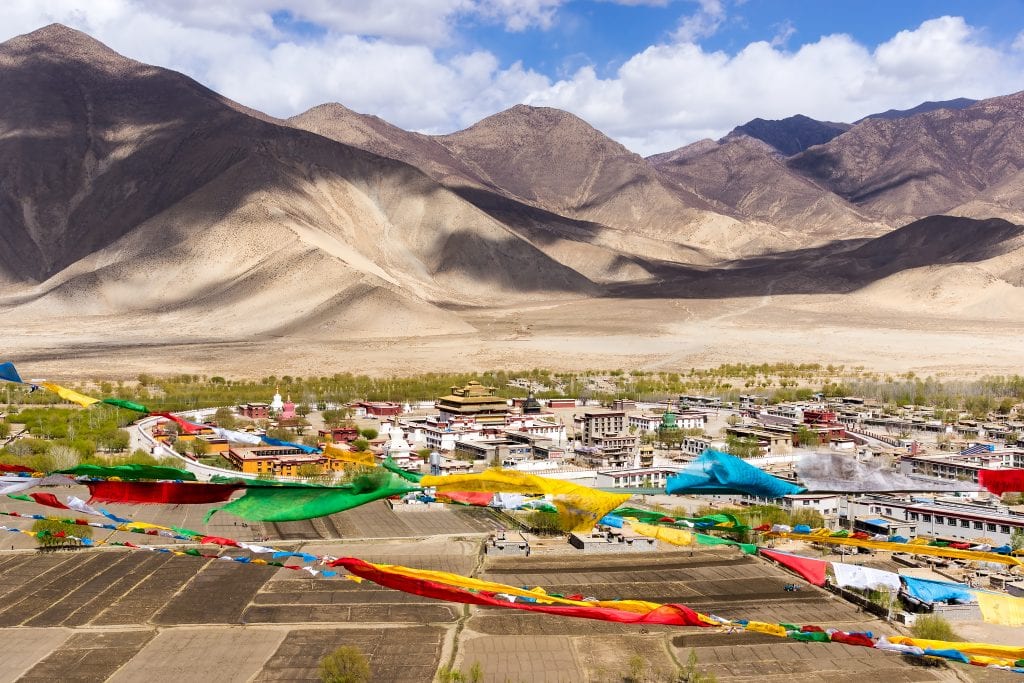
An Essential Guide to Visiting Samye Monastery Complex
Nestled in the serene embrace of the Yarlung Zangbo River Valley, the Samye Monastery Complex stands as a testament to the rich tapestry of Tibetan culture and spirituality. Founded in the 8th century by the visionary King Trisong Detsen, this historic site is revered not only as the first Buddhist monastery in Tibet but also as the birthplace of Tibetan Buddhism itself. With its unique mandalic design that mirrors the Buddhist universe, Samye invites travelers to embark on a journey through time, where the echoes of ancient debates and the vibrant colors of traditional festivals still resonate in the air.
As you step into the complex, you’ll be captivated by the harmonious blend of Tibetan, Han, and Indian architectural styles, a reflection of the cultural confluence that defines this sacred space. The centerpiece, the majestic Utse Temple, rises like Mount Meru, surrounded by intricately designed stupas and chapels that each tell a story of devotion and enlightenment. For those eager to delve deeper, the lively debates among monks and the annual festivals offer a glimpse into the dynamic spiritual life that continues to thrive here.
Whether you are an avid historian, a spiritual seeker, or simply a traveler in search of breathtaking landscapes, Samye Monastery Complex promises an unforgettable experience. With the towering Mount Hepo Ri and the winding paths of the Yarlung Valley beckoning for exploration, prepare to immerse yourself in the profound beauty and history of one of Tibet’s most cherished treasures.
In This Guide
- An Essential Guide to Visiting Samye Monastery Complex
- The Rich History and Legends of Samye Monastery Complex
- Main Highlights: What You Absolutely Can’t Miss
- Planning Your Visit: A Practical Guide
- Tickets: Prices, Booking, and Tips
- How to Get There: A Complete Transportation Guide
- Local Cuisine and Accommodation Nearby
- Frequently Asked Questions
- Final Thoughts on Your Trip
The Rich History and Legends of Samye Monastery Complex
Nestled at the foot of Mount Hepo Ri in Tibet’s Shannan Prefecture lies the Samye Monastery, a site steeped in history and legend. Founded in the late 8th century by King Trisong Detsen, this monastery is revered as the first Buddhist temple and college in Tibet, representing a significant turning point in the region’s spiritual evolution. It was here that Tibetan Buddhism began to flourish, nurtured by the teachings of the esteemed Indian master Padma Sambhava, also known as Guru Rinpoche.
The inception of Samye Monastery is deeply intertwined with the efforts to establish Buddhism in Tibet. Following the king’s vision, Padma Sambhava, along with the monk Shantirakshita, played a pivotal role in constructing the monastery between 775 and 779 AD. The trio—King Trisong Detsen, Padma Sambhava, and Shantirakshita—are celebrated within the monastery, with their statues prominently displayed in the Assembly Hall.
What sets Samye apart is not just its historical significance but its unique architectural design, which serves as a 3D representation of Buddhist cosmology. The layout of the monastery mimics the mandala, symbolizing the universe in Tibetan Buddhism. At its heart stands the Utse temple, a majestic structure that embodies the mythical Mount Meru, the center of the universe in Buddhist thought. Surrounding it are twelve chapels that symbolize the continents and subcontinents, complemented by four large stupas that represent the cardinal directions.
Over the centuries, Samye Monastery has withstood the test of time, enduring various phases of destruction and reconstruction. During the Cultural Revolution, it suffered significant damage, but recent restoration efforts have revitalized its grandeur, allowing visitors to experience its rich history firsthand.
One of the most captivating aspects of Samye Monastery is its vibrant monastic life. Visitors can witness the engaging debates among monks as they passionately discuss Buddhist scriptures, an age-old tradition that continues to breathe life into this sacred space. Additionally, the monastery hosts several significant Tibetan festivals, making it a lively cultural hub.
For those seeking to explore the surrounding region, the majestic Hepo Ri offers breathtaking views of the monastery and the Yarlung Zangbo River. Legend has it that this very mountain was the site where Padma Sambhava subdued demons, further solidifying its mystical significance within Tibetan lore.
In summary, the Samye Monastery Complex is not merely a collection of buildings; it is a living testament to the intertwining of culture, spirituality, and history in Tibet. Whether you are drawn by its architectural beauty, its spiritual depth, or the rich tapestry of legends that surround it, a visit to Samye promises an unforgettable journey into the heart of Tibetan heritage.
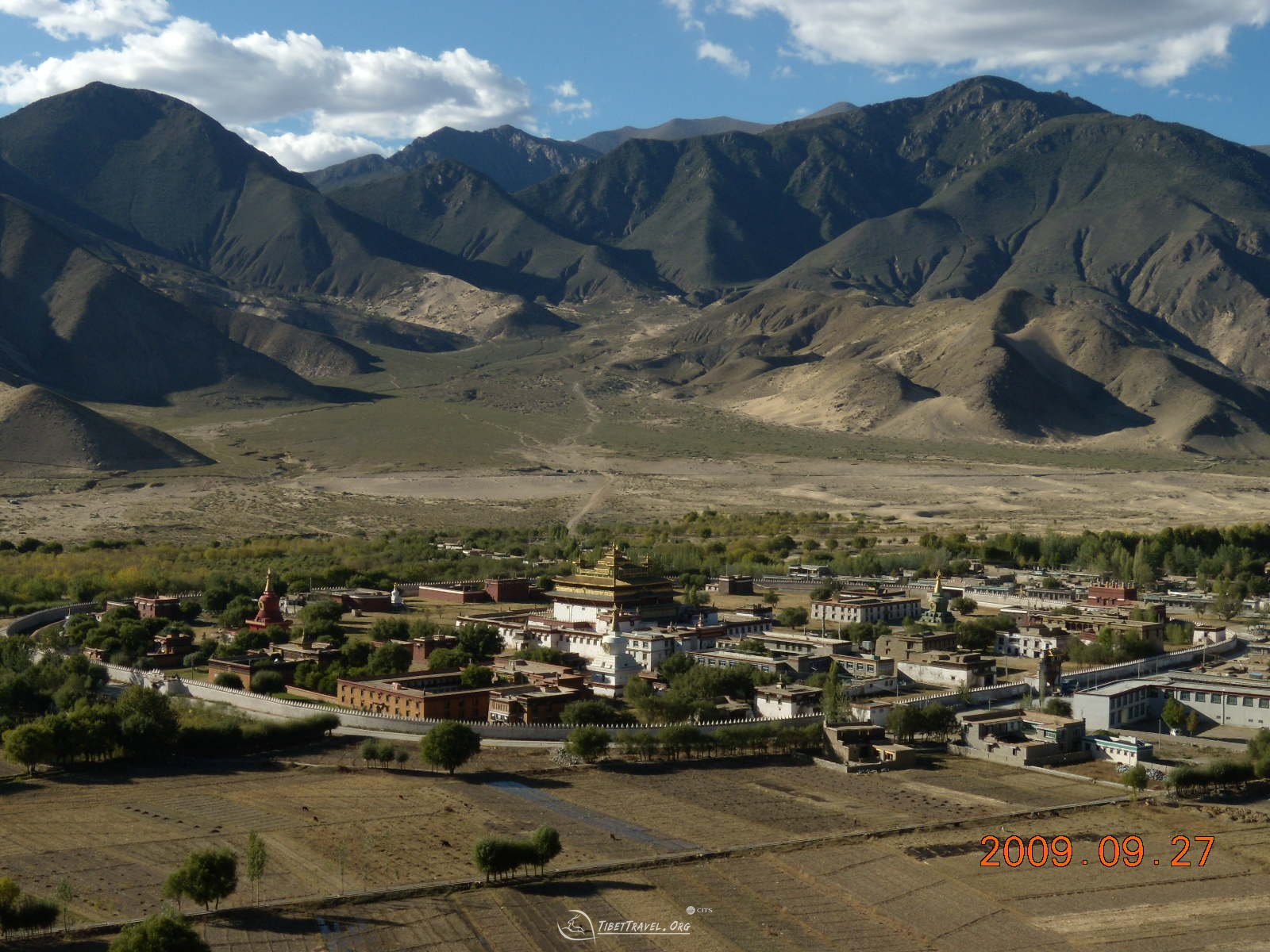
Samye Monastery Complex.
Main Highlights: What You Absolutely Can’t Miss
Discover the Unmissable Highlights of Samye Monastery Complex
Nestled at the foot of Mount Hepo Ri, the Samye Monastery Complex is a treasure trove of Tibetan culture, history, and spirituality. As the first Buddhist monastery in Tibet, founded in the 8th century, this extraordinary site is a must-visit for international travelers eager to immerse themselves in the rich tapestry of Tibetan Buddhism and architecture. Here are the key highlights you simply cannot miss during your visit.
1. The Unique Mandala Layout
Samye Monastery is designed as a three-dimensional mandala, representing the Buddhist universe. At its heart lies the Utse Temple, symbolizing Mount Meru, surrounded by chapels that represent the continents and subcontinents of Buddhist cosmology. The intricate design reflects deep philosophical meanings, making it an architectural marvel.
2. The Majestic Utse Temple
Step into the main temple, Utse, where you’ll find three distinct floors, each showcasing a unique architectural style—Tibetan, Chinese, and Indian. This convergence of styles illustrates the cultural synthesis that characterizes Tibetan Buddhism. Don’t forget to admire the statues of the monastery’s founders, King Trisong Detsen, Padma Sambhava, and Shantirakshita, housed within the Assembly Hall.
3. The Four Large Stupas
As you explore the complex, be sure to visit the four large stupas located at cardinal points around the main temple. Each stupa is adorned with vibrant colors and unique symbolism:
– White Stupa: Represents purity, guarded by snow lions.
– Red Stupa: Known as the “Dharma Wheel”, embellished with lotus decorations.
– Black Stupa: Symbolizes Nirvana.
– Green Stupa: Often referred to as “Tashigomang” with its sixteen doors.
These stupas are not just stunning visual elements; they are integral to the spiritual landscape of the monastery.
4. The Great Debate
If your visit aligns with the schedule, catch the monks’ debates that occur in the courtyard. This lively intellectual exercise involves monks passionately discussing Buddhist sutras with vigorous hand gestures and animated expressions, providing a unique glimpse into the dynamic nature of Tibetan monastic life.
5. Climb Mount Hepo Ri
For breathtaking views of the monastery and the surrounding landscape, embark on a hike up Mount Hepo Ri. The journey offers stunning vistas of the Tsedang Valley and the Yarlung Zangbo River. The panoramic views at the summit, especially at sunset, are truly unforgettable.
6. Chim-puk Hermitage
Take a short detour to Chim-puk Hermitage, where you can explore the sacred caves once inhabited by Buddhist lamas. This serene spot adds a layer of tranquility and depth to your experience, showcasing the spiritual practices that have flourished in this region for centuries.
7. Experience Tibetan Festivals
If timing allows, immerse yourself in the vibrant atmosphere of Tibetan festivals like the Weisang Festival or the Cham Dance Festival. These events feature traditional music, dance, and rituals that highlight the rich cultural heritage of the Tibetan people.
8. The Oval Wall of Chortens
Surrounding the monastery complex is a remarkable oval wall adorned with 1,008 small chortens. This wall is a symbol of Chakravala, the cosmic ring of mountains that encircles the universe, offering a profound insight into the spiritual beliefs that underpin Tibetan Buddhism.
Conclusion
The Samye Monastery Complex is more than just a historical site; it is a living testament to the enduring spirit of Tibetan culture and Buddhism. From its unique architectural design to the vibrant traditions that continue to be celebrated today, every corner of Samye offers something special. Make sure to carve out time in your travel itinerary to fully absorb the serenity and beauty of this sacred place.
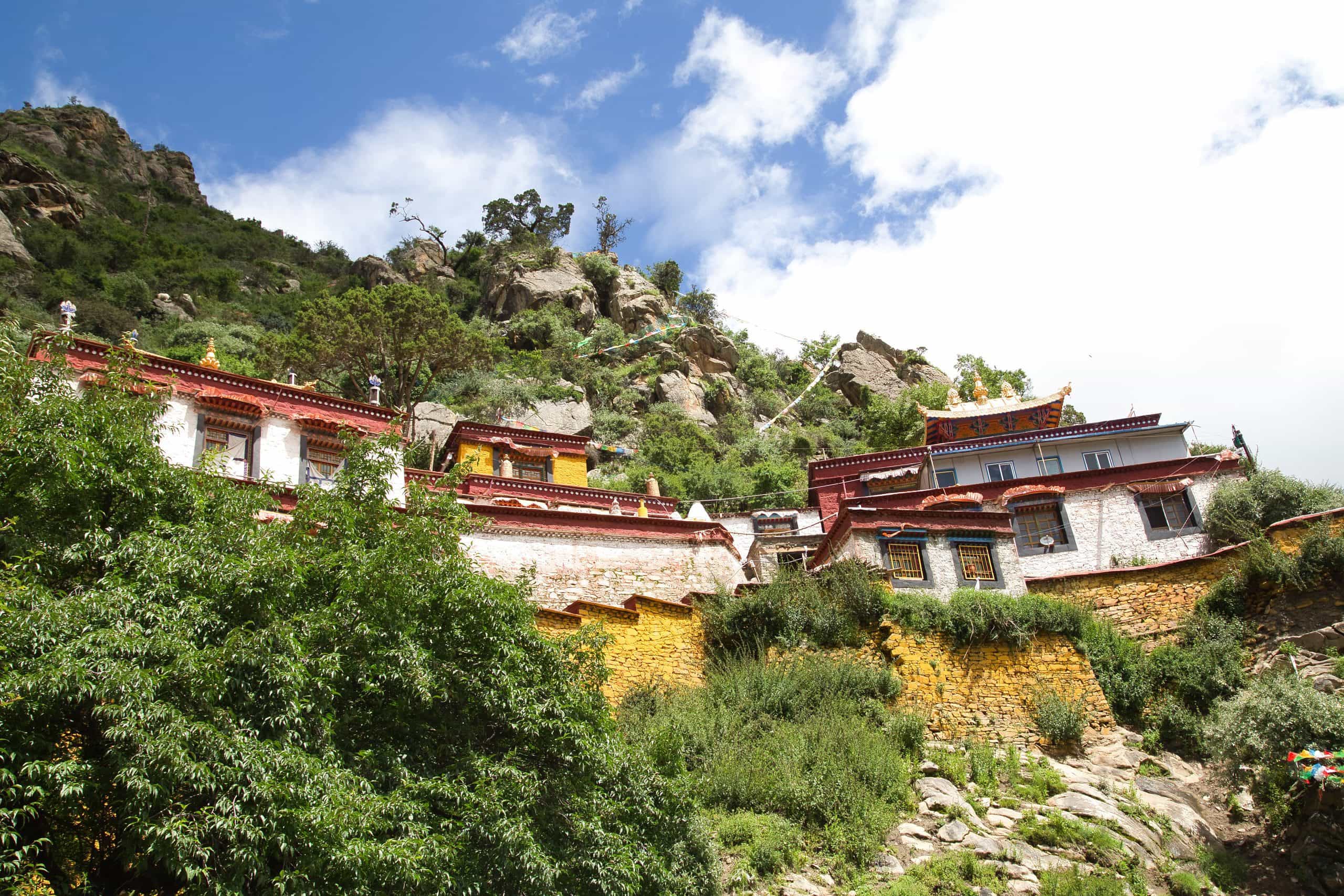
Samye Monastery Complex.
Planning Your Visit: A Practical Guide
Visiting Samye Monastery Complex offers a unique glimpse into the rich tapestry of Tibetan culture and Buddhism. This ancient site, founded in the 8th century, is not only the first Buddhist monastery in Tibet but also a stunning architectural marvel shaped like a mandala. Here’s everything you need to know to plan your visit effectively.
Getting There
Location: Samye Monastery is located at the foot of Mount Hepo Ri in Dranang County, Shannan Prefecture, Tibet. It is approximately 136 kilometers from Lhasa and 49.7 kilometers from Tsedang Town.
Transportation Options:
– By Car: The most convenient way to reach Samye is to hire a private car or join a guided tour. The journey from Lhasa typically takes around 3.5 hours, while it’s about 1.5 hours from Tsedang.
– Public Transport: While there is limited public transport, it’s advisable to opt for a guided tour for a smoother experience, especially if you are unfamiliar with the area.
Best Time to Visit
Samye Monastery can be visited year-round. However, the most pleasant months are from May to October when the weather is milder. If you wish to experience local festivals, consider planning your trip around the Weisang Festival or the Cham Dance Festival, both of which showcase vibrant Tibetan culture.
Entry Requirements
Opening Hours: The monastery is open daily from 09:00 to 16:00.
Ticket Price: Entry is priced at 40 CNY per person. Make sure to carry cash, as card facilities may not be available.
What to Expect
Exploring the Complex:
– The layout of Samye is a 3D representation of the Buddhist universe, with the main temple (Utse) symbolizing Mount Meru, surrounded by chapels representing continents and subcontinents.
– Don’t miss the four colored stupas located at each cardinal direction: the White Stupa, Red Stupa, Black Stupa, and Green Stupa, each with its own unique symbolism.
– Attend a monk debate, typically held in the courtyard, where monks engage in lively discussions of Buddhist sutras with animated gestures.
Climbing Hepo Ri: For breathtaking views of the monastery and the surrounding Yarlung Zangbo River valley, hike up to the summit of Mount Hepo Ri. The climb is rewarding, especially at sunset when the sky is painted in hues of orange and red.
Accommodation
While options are limited, the Samye Hotel across from the monastery offers basic but comfortable accommodations. Rooms typically feature twin beds, hot showers, and Wi-Fi. Breakfast is included, though it is quite simple.
Dining Options
In and around the monastery, you’ll find several small Tibetan restaurants serving traditional dishes. Most eateries are located near the main gate, where you can enjoy local favorites such as:
– Tibetan Noodles: A staple, often served cold or warm.
– Potato Fries: A popular snack sold by street vendors.
– Western Breakfast: Some restaurants offer a Western-style breakfast to complement your stay.
Nearby Attractions
Extend your visit by exploring other significant sites in the vicinity of Samye:
– Chim-puk Hermitage: A short trek leads to this serene hermitage used by Buddhist lamas.
– Trandruk Monastery and Mindroling Monastery: Both are rich in history and architecture, showcasing the diversity of Tibetan Buddhism.
– The Tombs of the Tibetan Kings: Located nearby, these historical sites offer insights into the region’s royal past.
Final Tips
- Acclimatization: Given the altitude of Samye (approximately 3,565 meters or 11,696 feet), it’s crucial to acclimatize properly. Spend a few days in Lhasa before heading to Samye.
- Respect Local Customs: Dress modestly and observe local customs during your visit to the monastery, particularly during prayer times or festivals.
- Photography: While photography is generally allowed, be respectful of areas where it may be prohibited, especially during rituals.
With its rich history, breathtaking scenery, and spiritual significance, a visit to Samye Monastery Complex promises to be a memorable experience that deepens your understanding of Tibetan culture and Buddhism. Plan your journey thoughtfully, and immerse yourself in the tranquility and beauty of this remarkable site.

Samye Monastery Complex.
Tickets: Prices, Booking, and Tips
Visiting the Samye Monastery Complex is an unforgettable experience, offering a glimpse into the rich tapestry of Tibetan culture and Buddhism. To ensure you have a seamless visit, here’s what you need to know about ticket prices, booking, and some handy tips.
Ticket Information
- Entrance Fee: The ticket price to access Samye Monastery is 40 CNY per person (approximately 6 USD). This fee grants you entry to the stunning temple complex and its unique architecture.
- Opening Hours: The monastery is open daily from 09:00 AM to 04:00 PM. Arriving early is advisable to make the most of your visit, as you can explore the chapels and catch the monks’ debates in the afternoon.
Booking Tips
- No Advanced Booking Required: Tickets for Samye Monastery can be purchased on-site, so you don’t need to worry about booking in advance. However, during peak tourist seasons, it’s wise to arrive early to avoid crowds.
- Guided Tours: Consider joining a guided tour if you want to enhance your experience. Many local tour operators offer comprehensive packages that include transportation from Lhasa, a knowledgeable guide, and additional stops at nearby attractions.
- Travel Permits: Ensure you have the necessary travel permits for Tibet. While the ticket for Samye Monastery itself does not require advance booking, you must secure your Tibet Travel Permit through a registered travel agency before your trip.
Additional Tips
- Cash is King: Bring cash (CNY) to purchase your tickets and for any small purchases, as not all vendors accept credit cards.
- Dress Appropriately: Since the monastery is a sacred site, dress modestly and respectfully. Comfortable shoes are also recommended, as you may want to explore the grounds and climb to nearby viewpoints.
- Best Time to Visit: The monastery can be enjoyed year-round, but spring and autumn offer the most pleasant weather for sightseeing. If possible, try to align your visit with local festivals, such as the Weisang Festival or Cham Dance Festival, to experience traditional Tibetan culture in full swing.
- Stay Hydrated and Acclimatize: Given the high altitude (about 3,580 meters), it’s crucial to stay hydrated and give your body time to acclimatize. Take it easy on your first day in Tibet.
With these details in mind, you’re all set for a remarkable journey to the Samye Monastery Complex, where history, spirituality, and breathtaking beauty converge. Enjoy your visit!
How to Get There: A Complete Transportation Guide
Reaching the Samye Monastery Complex, a jewel in Tibet’s rich cultural heritage, is an adventure in itself, blending stunning landscapes with the tranquility of Tibetan spirituality. Here’s your comprehensive guide to navigating your way to this historical site.
Getting There by Car
From Lhasa:
- Distance: Approximately 136 kilometers (about 85 miles)
- Travel Time: Around 3.5 hours
The most common way to reach Samye Monastery from Lhasa is by hiring a private car or booking a tour vehicle. Many travel agencies offer guided tours that include transportation, which is a convenient option for international travelers. The drive takes you through scenic Tibetan landscapes, with the majestic mountains and valleys providing a breathtaking backdrop.
From Tsedang:
- Distance: About 49.7 kilometers (30.9 miles)
- Travel Time: Approximately 1.5 hours
If you’re staying in Tsedang, the journey to Samye is quite short and can be made via local taxis or by joining a tour group. The route from Tsedang to Samye is equally picturesque, showcasing the natural beauty of the Yarlung Zangbo River Valley.
Public Transportation
While public transportation options are limited, you can find local buses that run between Lhasa and Tsedang. However, these services may not always have a direct route to Samye and could require additional transfers.
- Buses from Lhasa to Tsedang: Frequent departures are available from Lhasa’s main bus station. The journey takes about 2-2.5 hours.
- From Tsedang to Samye: Once in Tsedang, you can take a local minibus or taxi to reach Samye Monastery.
Tour Packages
Many travelers opt for organized tours, which often include transportation, guided tours, and sometimes accommodation. This option is particularly beneficial for those unfamiliar with the region or the language. Popular tour packages may include:
- Day trips from Lhasa: These typically cover the major highlights of Samye and may incorporate other nearby attractions.
- Multi-day itineraries: Longer tours that explore the broader region of Tibet, including Samye, often provide a more immersive experience.
Important Tips for Travelers
-
Altitude Consideration: Samye Monastery is located at an altitude of 3,565 meters (11,696 feet). It’s advisable to acclimatize properly in Lhasa before making the journey to avoid altitude sickness.
-
Travel Permits: Ensure you have the necessary Tibet Travel Permit, which is required for all travelers entering Tibet. This permit is usually arranged through your tour operator.
-
Best Time to Visit: The monastery can be visited year-round, but spring and autumn offer the most pleasant weather for sightseeing and trekking.
-
Local Guides: Hiring a local guide can enhance your experience, providing insights into the rich history and cultural significance of the monastery.
Conclusion
Whether you choose to drive from Lhasa, take a bus, or join a guided tour, getting to Samye Monastery Complex is an accessible and rewarding journey. The blend of stunning natural beauty and profound historical significance makes every moment of travel worthwhile. Prepare for an unforgettable experience at one of Tibet’s most revered sites!
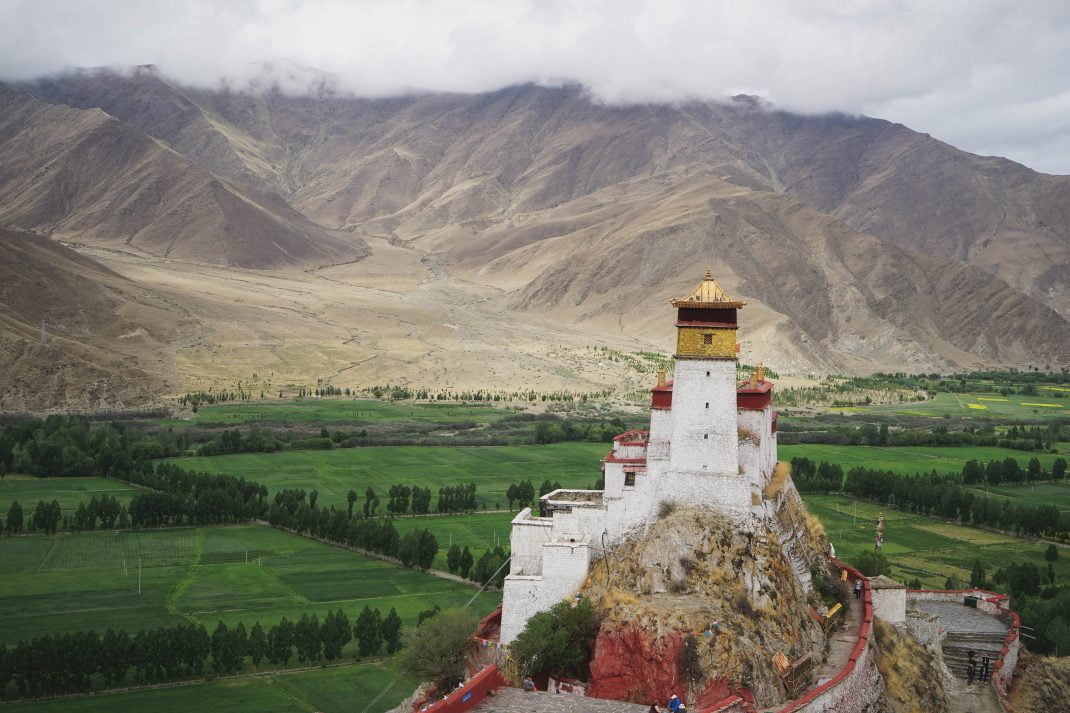
Samye Monastery Complex.
Local Cuisine and Accommodation Nearby
When visiting the stunning Samye Monastery Complex, you’ll want to indulge in the local flavors of Tibetan cuisine and find comfortable accommodations that enhance your experience. Here are some recommendations to make your stay memorable.
Where to Eat
Tibetan Restaurants Near the Monastery
Around the main gate of Samye Monastery, you’ll find a variety of small eateries serving traditional Tibetan dishes. These quaint restaurants offer a glimpse into local flavors, featuring hearty meals that will fuel your explorations. Look out for:
- Thukpa: A comforting noodle soup, often served with vegetables and meat, perfect for warming up after a day of sightseeing.
- Momos: Delicious dumplings typically filled with meat or vegetables, steamed to perfection and often accompanied by a spicy dipping sauce.
- Tibetan Bread: Soft, fluffy bread that pairs wonderfully with tea or can be enjoyed with local jams.
- Cold Wheat Noodles (Liangpi): A refreshing dish made from wheat flour, served cold with freshly chopped vegetables and a dressing that may surprise your taste buds.
Additionally, if you’re in the mood for something familiar, many restaurants also serve Western-style breakfasts, ensuring you have a hearty start to your day.
Street Food Options
Don’t miss the street vendors near the monastery gate, where you can find tasty snacks like freshly made potato fries and crispy chips. These quick bites are perfect for munching on while you enjoy the sights.
Where to Stay
Samye Monastery Hotel
For a unique experience, consider staying at the Samye Monastery Hotel, located just across the street from the monastery. While the hotel is simple, it provides all the essential amenities you need for a comfortable stay:
- Rooms: The hotel features cozy rooms equipped with twin beds, ensuring a restful night after a day of exploration.
- Amenities: Enjoy hot showers, tea kettles for brewing your favorite drink, and free Wi-Fi, allowing you to share your experiences with friends and family.
- Breakfast: A simple breakfast is included in your stay, perfect for fueling your adventures ahead.
Additional Tips
When dining and lodging in Samye, be prepared for the local altitude and the Tibetan pace of life. The hospitality of the locals and the authentic flavors of the region will undoubtedly enrich your visit to this culturally significant site. Enjoy your culinary journey and restful nights as you immerse yourself in the beauty of the Samye Monastery Complex!
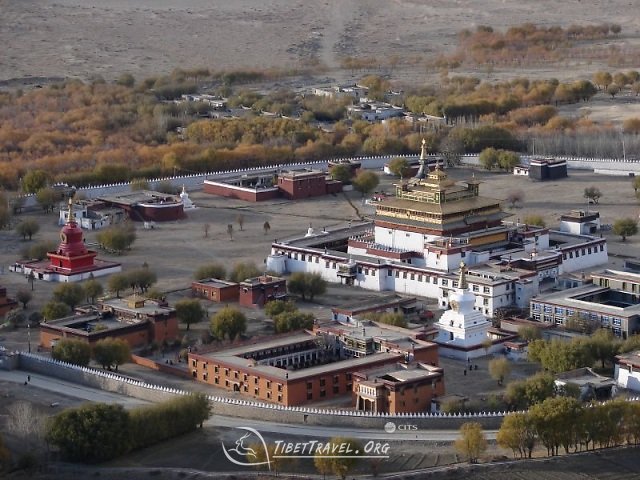
Samye Monastery Complex.
Frequently Asked Questions
-
What is the best time to visit Samye Monastery?
The best time to visit Samye Monastery is year-round, but spring (April to June) and autumn (September to October) offer mild weather and clear skies, making your exploration more enjoyable. Be mindful of the altitude and plan accordingly. -
How do I get to Samye Monastery from Lhasa?
You can hire a private car or join a guided tour, which typically takes about 3.5 hours to cover the 136 kilometers from Lhasa. Alternatively, if you’re in Tsedang Town, it’s just a 1.5-hour drive away. -
What are the entrance fees and opening hours?
Samye Monastery is open daily from 9:00 AM to 4:00 PM, and the entrance fee is 40 CNY per person. It’s advisable to arrive early to maximize your visit, as the chapel access can vary throughout the day. -
Can I stay overnight near the monastery?
Yes, there is a simple monastery hotel located across the street from Samye Monastery, offering basic amenities like twin beds, hot showers, and free Wi-Fi. Breakfast is included, but it’s quite simple. -
What should I wear when visiting Samye Monastery?
Dress modestly and comfortably, keeping in mind the high altitude and potential weather changes. Layered clothing is recommended, along with sturdy shoes for walking around the monastery complex and hiking nearby. -
Are there any local dining options near Samye Monastery?
Yes, there are several small Tibetan restaurants near the monastery serving traditional meals. You can find a variety of dishes, including Tibetan specialties and some Western breakfast options. -
What activities can I do at Samye Monastery?
You can explore the unique architecture, participate in monk debates (if available), hike to Hepo Ri for stunning views, and attend local festivals if your visit coincides with them. Don’t miss the four large stupas surrounding the main temple. -
Is it necessary to book a guided tour, or can I explore on my own?
While it’s possible to explore on your own, joining a guided tour can enhance your experience by providing insights into the monastery’s rich history and architecture. Additionally, guides can help with transportation and navigating the high-altitude environment.
Final Thoughts on Your Trip
As you conclude your journey through the mesmerizing Samye Monastery Complex, take a moment to reflect on the rich tapestry of history and culture that envelops this sacred site. Nestled amid the breathtaking landscapes of Tibet, Samye stands not only as the first Buddhist monastery in the region but also as a living testament to the intertwining of Tibetan, Indian, and Han architectural influences.
Your exploration of Samye has likely deepened your understanding of Tibetan Buddhism, from the intricate layout symbolizing the cosmos to the vibrant debates that echo through its halls. Don’t forget to cherish the serene moments spent gazing upon the majestic Mt. Hepo Ri or the tranquil Yarlung Zangbo River.
Whether you’ve marveled at the stunning stupas, engaged in lively discussions with monks, or simply soaked in the spiritual atmosphere, each experience contributes to the profound connection you feel with this ancient place. As you prepare to leave, carry with you the essence of Samye—a blend of wisdom, tranquility, and the enduring legacy of a culture that has shaped the heart of Tibet for centuries. Your adventure doesn’t end here; let the spirit of Samye inspire your future travels and exploration of the world.